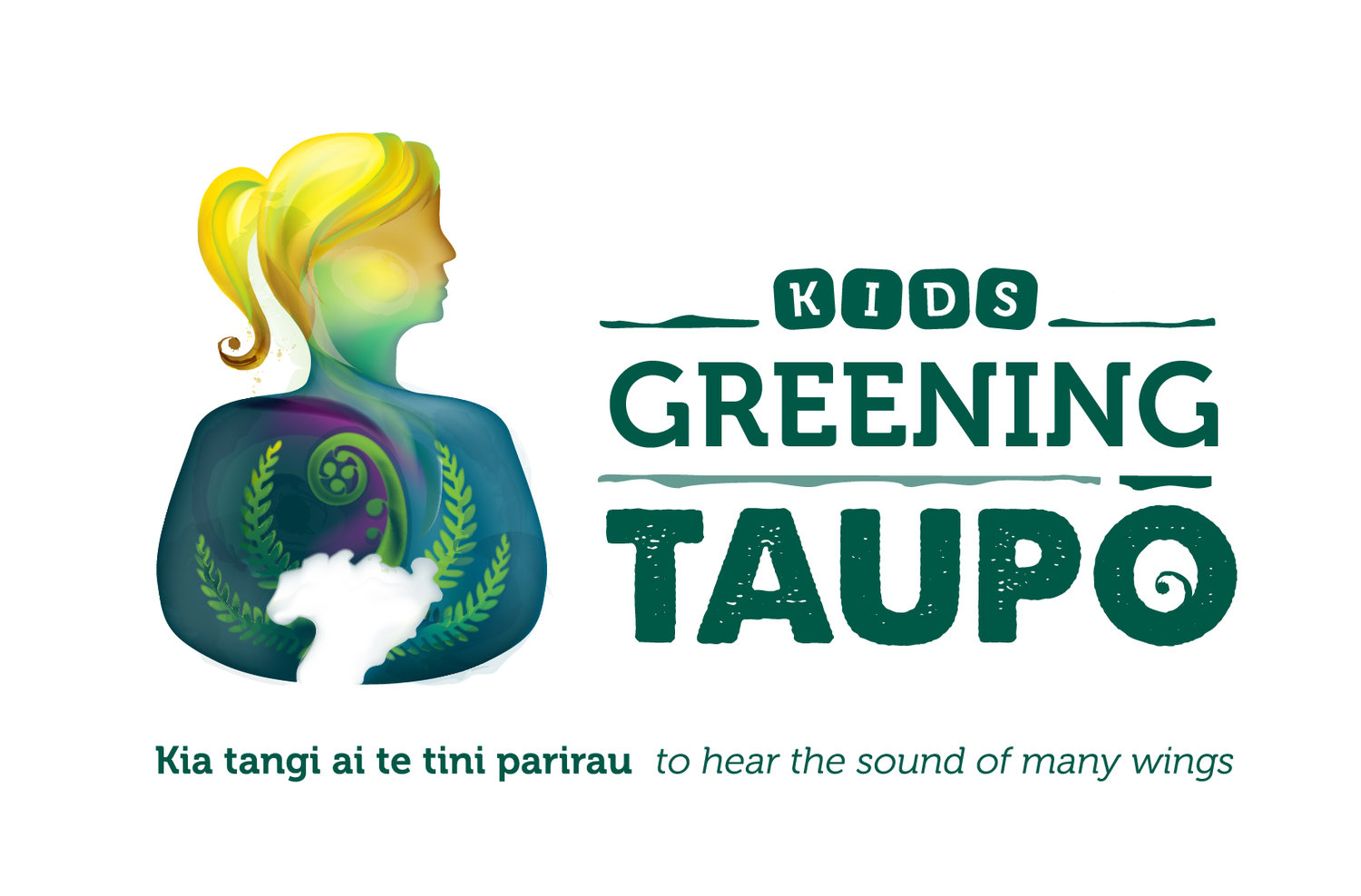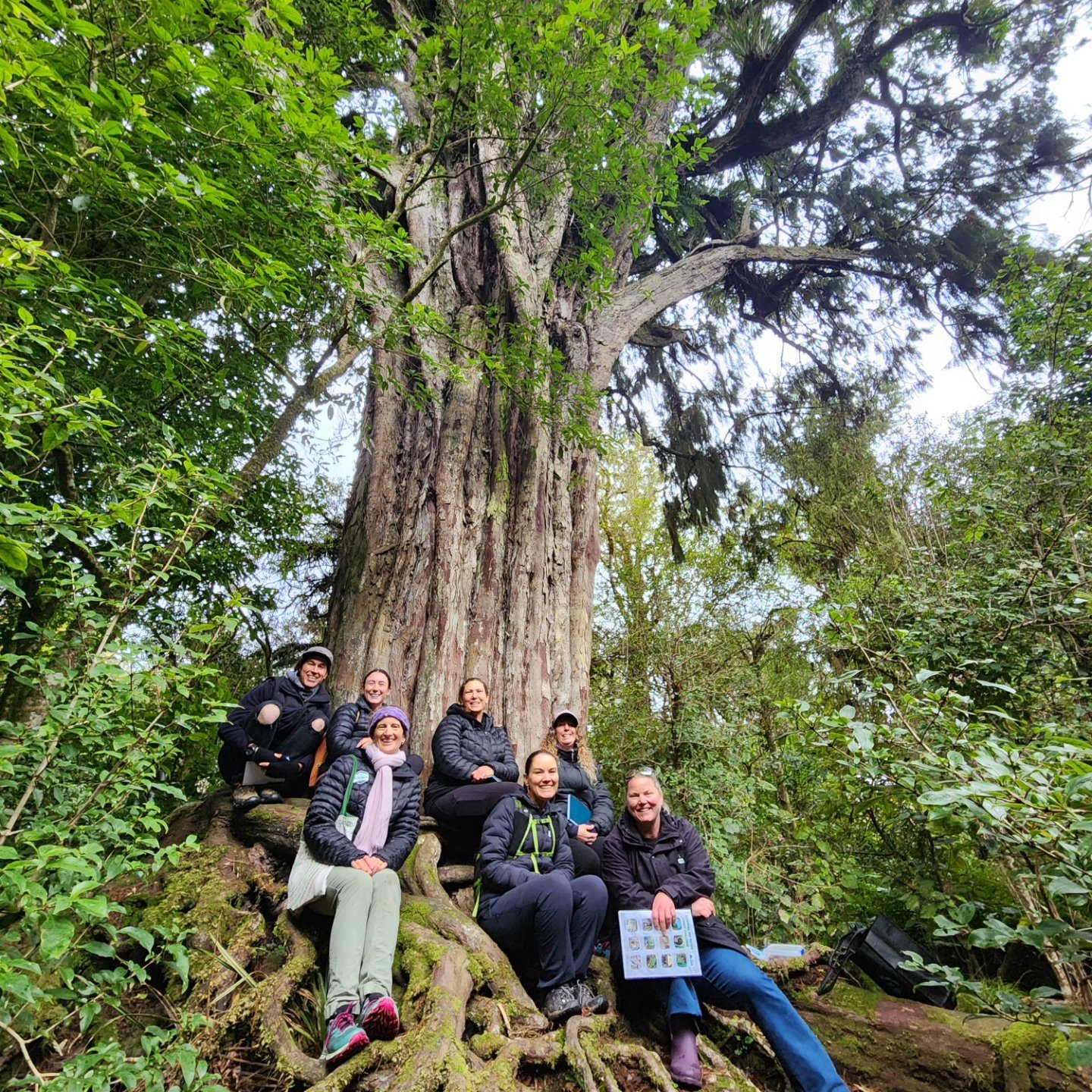Opepe Bush Walk- Teacher PD
Stopping under a Rimu tree, taking time to look up at the swaying fronds of the trees canopy you can understand how this tree got its name, as limu and rimu both mean seaweed in Polynesian languages (rimurimu in te reo Māori).
One of our favourite places is the Opepe Scenic Reserve. This is the only remaining piece of mature native bush that we have close to Taupõ. It’s a great place to come to see some really big mature trees and to get an idea of how large areas of New Zealand looked before they were deforested. We had a fantastic professional development session where local teachers were able to learn about the native flora and fauna from our coordinator.
The bush holds so many stories and on this short loop walk there was lots to learn and see.
Kōtukutuku with its orange papery bark.
One of our coordinator, Rachel’s, favourite trees is kōtukutuku, the tree fuchsia. This is the world’s largest fuchsia. It has a characteristic orange papery bark and is one of New Zealand’s few deciduous trees. If you ever see a plant that looks just like a stick at a planting day these will be a tree fuchsia (hopefully, not a dead tree!). There are lots of kōtukutuku at Opepe. They produce delicious berries known as konini which are a real treat. The flowers, as well as being pretty, are edible and full of nectar, attracting all the nectar drinking birds. The flowers also change colour once they are pollinated. Even the pollen is special, as it is blue. So, it’s easy to see birds that have been feasting on fuchsia nectar as they dusted in this colourful pollen. Unfortunately, possums also really love this tree and can cause significant damage. Opepe has good predator control, so possum numbers are well controlled, so the tree fuchsias can thrive here. Learn more here: https://www.kidsgreeningtaupo.org.nz/activities-nature-connection/kotukutuku
At Opepe there is so much to see and taste. If you look carefully you can find glow worms in the banks. These little glow worms are actually the larvae of the fungus gnat which produces a blue/green bioluminescence. This species of fungus gnat is endemic to New Zealand and only found here and Australia. We also learned about the traditional uses of some native plants in rongoā (Māori medicine) and how the forest can be healing. Tātarāmoa- bush lawyer, is a prickly vine best avoided when walking in the bush, but when it’s dried it can be used to make a tea to help with sleep. Take care if you try to collect leaves though, as it has thorns. Horopito the spicy pepper plant has both anti fungal and antimicrobial properties, but be careful, don’t rub your eyes after you’ve handled it, as it will make them burn! Not everyone was brave enough to sample this but we did get to taste some of the young fronds of the Kōwaowao - hounds tongue fern, which is like a nutty tasting lettuce leaf.
We got to see the distinctive bark of the Matai tree which flakes in chunks that reveal bright red blotches when wet. One of our teachers managed to squeeze inside the hollow matai tree for a look at what lives in there. We also learnt about the putaputaweta trees, which are full of holes and scars made by the Puriri moth, and we saw kahikatea, which are the tallest trees in New Zealand. Opepe really is a special area of native bush and we love being able to share this walk with adults and children alike, everyone should get to experience the magic of our native forest.








